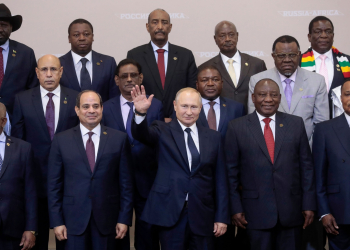Russia and China have urged North Korea to “freeze” its missile and nuclear programmes after it claimed to have successfully tested its first intercontinental ballistic missile.
Both countries also called for a simultaneous suspension of US-South Korea large-scale military exercises.
North Korea said its missile could hit anywhere in the world.
But while Pyongyang appears to have made progress, experts believe the device cannot accurately hit a target.
Despite the North Korean claim, both the US and Russia said the missile presented no threat to either country.
Calling the launch “unacceptable”, Russia and China also urged the US to not deploy the Thaad missile system, aimed at intercepting attacks from North Korea.
Chinese President Xi Jinping was in Moscow, where he held talks with Russian President Vladimir Putin.
What did North Korea say?
The announcement on North Korea state television said the Hwasong-14 intercontinental ballistic missile (ICBM) test was overseen by leader Kim Jong-un.
It said the projectile had reached an altitude of 2,802km (1,731 miles) and flew 933km for 39 minutes before hitting a target in the sea.
North Korea, it said, was now “a full-fledged nuclear power that has been possessed of the most powerful inter-continental ballistic rocket capable of hitting any part of the world”.
But experts also believe that Pyongyang does not have the capacity to miniaturise a nuclear warhead that can fit onto such a missile.
How far could this missile travel?
The big question is what range it has, says the BBC’s Steven Evans in Seoul. Could it hit the United States?
David Wright, a physicist with the US-based Union of Concerned Scientists, says that if the reports are correct, this missile could “reach a maximum range of roughly 6,700km on a standard trajectory”.
That range would allow it to reach Alaska, but not the large islands of Hawaii or the other 48 US states, he says.
It is not just a missile that North Korea would need, our correspondent adds. It must also have the ability to protect a warhead as it re-enters the atmosphere, and it is not clear if North Korea can do that.
What does this test tell us? By defence expert Melissa Hanham
Once again North Korea has defied the odds and thumbed its nose at the world in a single missile launch. With the test of the Hwasong-14, it has shown that it can likely reach intercontinental ballistic missile ranges, including putting Alaska at risk.
Kim Jong-un has long expressed his desire for such a test, and to have it on the 4 July holiday in the US is just the icing on his very large cake.
Despite this technical achievement, however, it is likely many outside North Korea will continue to be sceptical. They will ask for proof of working guidance, re-entry vehicle, and even a nuclear warhead.
From a technical perspective, though, their engines have demonstrated ICBM ranges, and this would be the first of several paths North Korea has to an ICBM with even greater range.
South Korea’s President Moon Jae-in has called on the United Nations Security Council to take steps against North Korea.
Japan described “repeated provocations like this are absolutely unacceptable” and Prime Minister Shinzo Abe said his country would “unite strongly” with the US and South Korea to put pressure on Pyongyang.
US President Donald Trump also responded swiftly on Tuesday.
On his Twitter account he made apparent reference to North Korean leader Kim Jong-un, saying: “Does this guy have anything better to do with his life?
“Hard to believe that South Korea and Japan will put up with this much longer. Perhaps China will put a heavy move on North Korea and end this nonsense once and for all!”
President Trump has repeatedly called on China, Pyongyang’s closest economic ally, to pressure North Korea to end its nuclear and missile programmes.
On the prospect of North Korea being able to strike the US, he tweeted in January: “It won’t happen.” However experts say it might – within five years or less.
Beijing called for “restraint” following the latest test on Tuesday.
Foreign ministry spokesman Geng Shuang said China was opposed to North Korea going against clear UN Security Council resolutions on its missile launches.
Meanwhile, a spokesman for Prime Minister Theresa May said the UK “stood alongside the US and our allies to confront the threat North Korea poses to international security”.
Join GhanaStar.com to receive daily email alerts of breaking news in Ghana. GhanaStar.com is your source for all Ghana News. Get the latest Ghana news, breaking news, sports, politics, entertainment and more about Ghana, Africa and beyond.
(Via: CitiFM Online Ghana)




